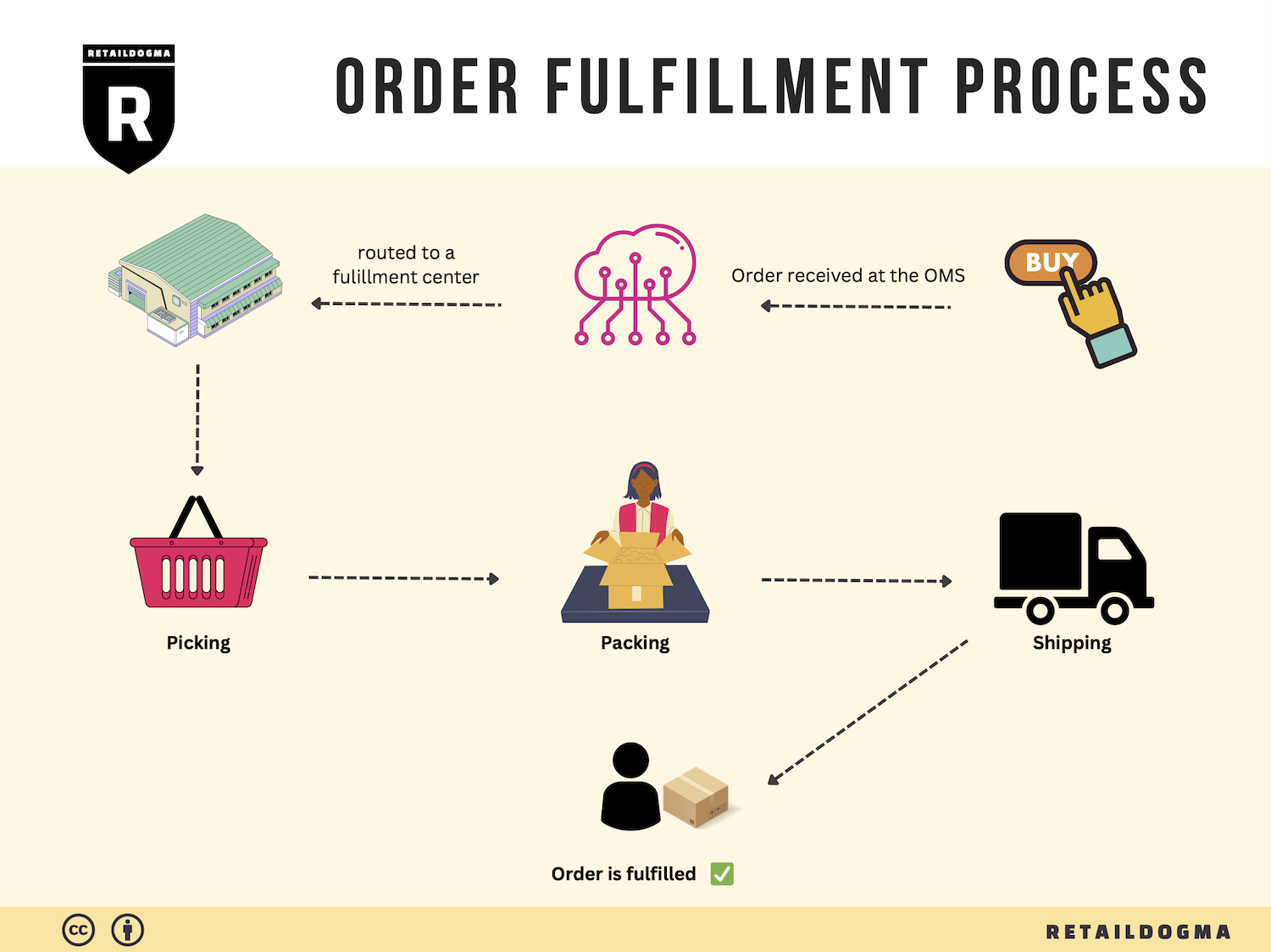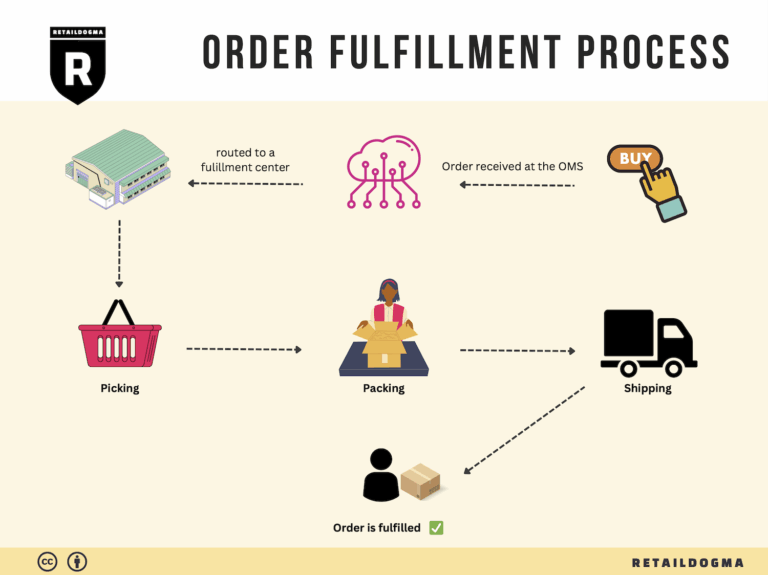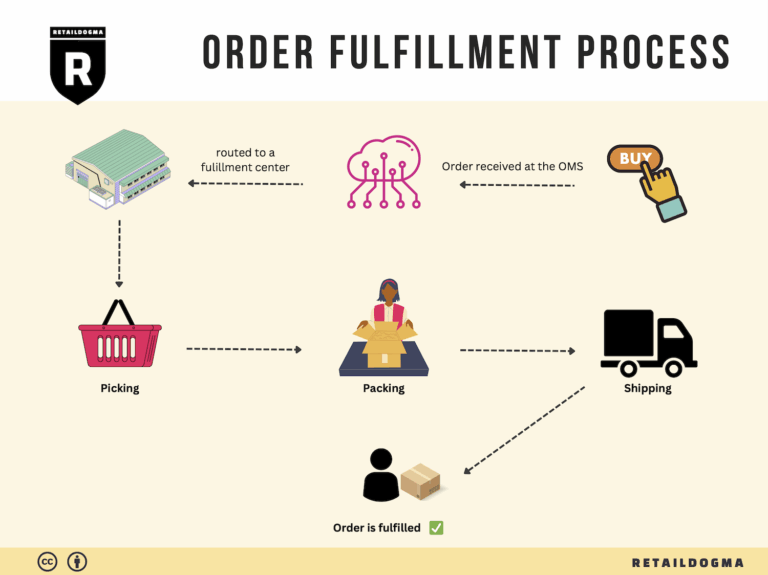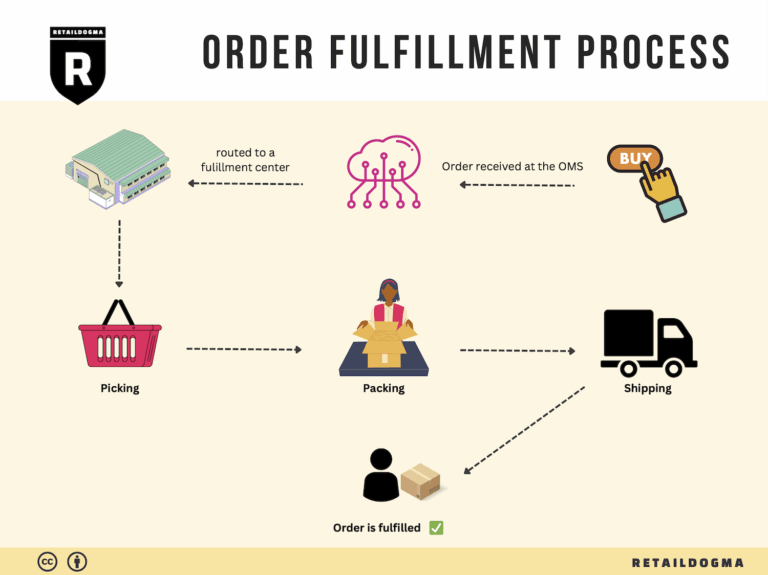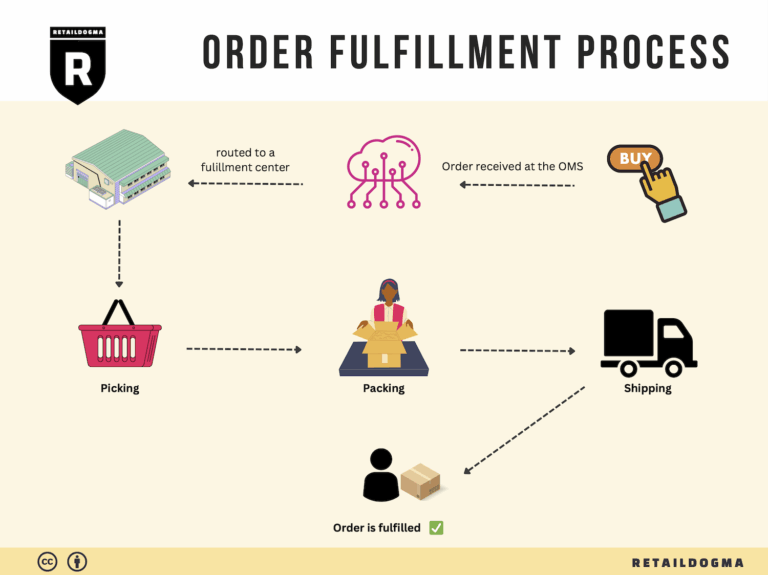How Order Fulfillment Works: A Step-by-Step Guide for Businesses
What is E-commerce Fulfillment? An Introduction for Growing Businesses
Navigating the Challenges of Order Fulfillment
As an e-commerce business owner, you might find yourself grappling with the overwhelming task of packing and shipping orders. What begins as a thrilling journey of launching your online store can quickly turn into a logistical nightmare as order volumes increase. The fulfillment process—the critical link between your business and your customers—can become a source of stress if not managed efficiently. Fulfillment is fundamentally about getting a product from your inventory into the hands of your customers, but it encompasses much more than just shipping.
In this guide, we aim to demystify e-commerce fulfillment, providing you with a clear understanding of its importance and the various models available to streamline your operations. We will explore the differences between fulfillment methods, such as Third-Party Logistics (3PL) and Fulfillment by Amazon (FBA), helping you identify which may be the best fit for your business needs.
What You Will Learn
Throughout this guide, you will discover the core services involved in e-commerce fulfillment, including inventory management, order processing, packing, shipping, and returns handling. We will also outline key factors to consider when choosing a fulfillment partner, such as their technology capabilities, geographic reach, and cost structures. Understanding pricing models will enable you to assess the financial implications of various fulfillment options, ensuring that you can make informed decisions that align with your business goals.
Empowering Your Logistics Decisions
The ultimate goal of this guide is to empower you to make smart, strategic decisions about your logistics. As you scale your e-commerce business, an optimized fulfillment process will not only enhance customer satisfaction and loyalty but also improve your operational efficiency and profitability. By understanding the ins and outs of e-commerce fulfillment, you can position your business for sustainable growth and success in an increasingly competitive market.
Join us as we explore the landscape of e-commerce fulfillment and arm yourself with the knowledge to transform this critical aspect of your business into a competitive advantage.
What You’ll Learn In This Guide
- What is E-commerce Fulfillment? An Introduction for Growing Businesses
- The Order Fulfillment Process: From ‘Buy’ Button to Customer’s Door
- Comparing Fulfillment Models: In-House vs. 3PL vs. Dropshipping
- A Deep Dive into Amazon FBA: Pros, Cons, and Who It’s For
- Core Services Offered by Fulfillment Centers
- How to Choose a Fulfillment Partner: A 6-Point Checklist
- Understanding Fulfillment Pricing: A Breakdown of Common Fees
- Frequently Asked Questions (FAQs) about Fulfillment
- Conclusion: Is Outsourcing Fulfillment the Right Move for Your Business?
- Important Disclaimer
The Order Fulfillment Process: From ‘Buy’ Button to Customer’s Door
1. Receiving Inventory
The order fulfillment process begins with receiving inventory, which is a crucial step for maintaining a seamless supply chain. During this phase, products are delivered to your warehouse from suppliers or manufacturers. Each item is checked against the purchase order to ensure accuracy and quality.
Why It’s Important: Proper receiving practices help prevent discrepancies between what was ordered and what was delivered. This is essential for maintaining accurate inventory levels and ensuring that customers receive the products they expect. A key term associated with this step is SKU (Stock Keeping Unit), which is a unique identifier for each product. Tracking SKUs during the receiving phase helps streamline inventory management and reduces the risk of stockouts or overstock situations.
2. Warehouse Storage
Once inventory is received, it needs to be stored efficiently within the warehouse. This involves organizing products in a way that maximizes space and accessibility. Effective warehouse storage strategies might include using shelving systems, bins, or pallets to optimize the layout.
Why It’s Important: Proper storage is critical for ensuring that products can be retrieved quickly and accurately during the order picking phase. A well-organized warehouse minimizes the time employees spend searching for items, which can significantly enhance operational efficiency. A key term in this step is FIFO (First In, First Out), a method used to ensure that older stock is sold before newer stock, reducing the risk of obsolescence and spoilage.
3. Order Picking
The order picking stage is where the actual fulfillment of customer orders begins. Employees or automated systems retrieve items from storage based on customer orders. This can be done using various picking methods, such as single order picking, batch picking, or wave picking, depending on the volume and complexity of the orders.
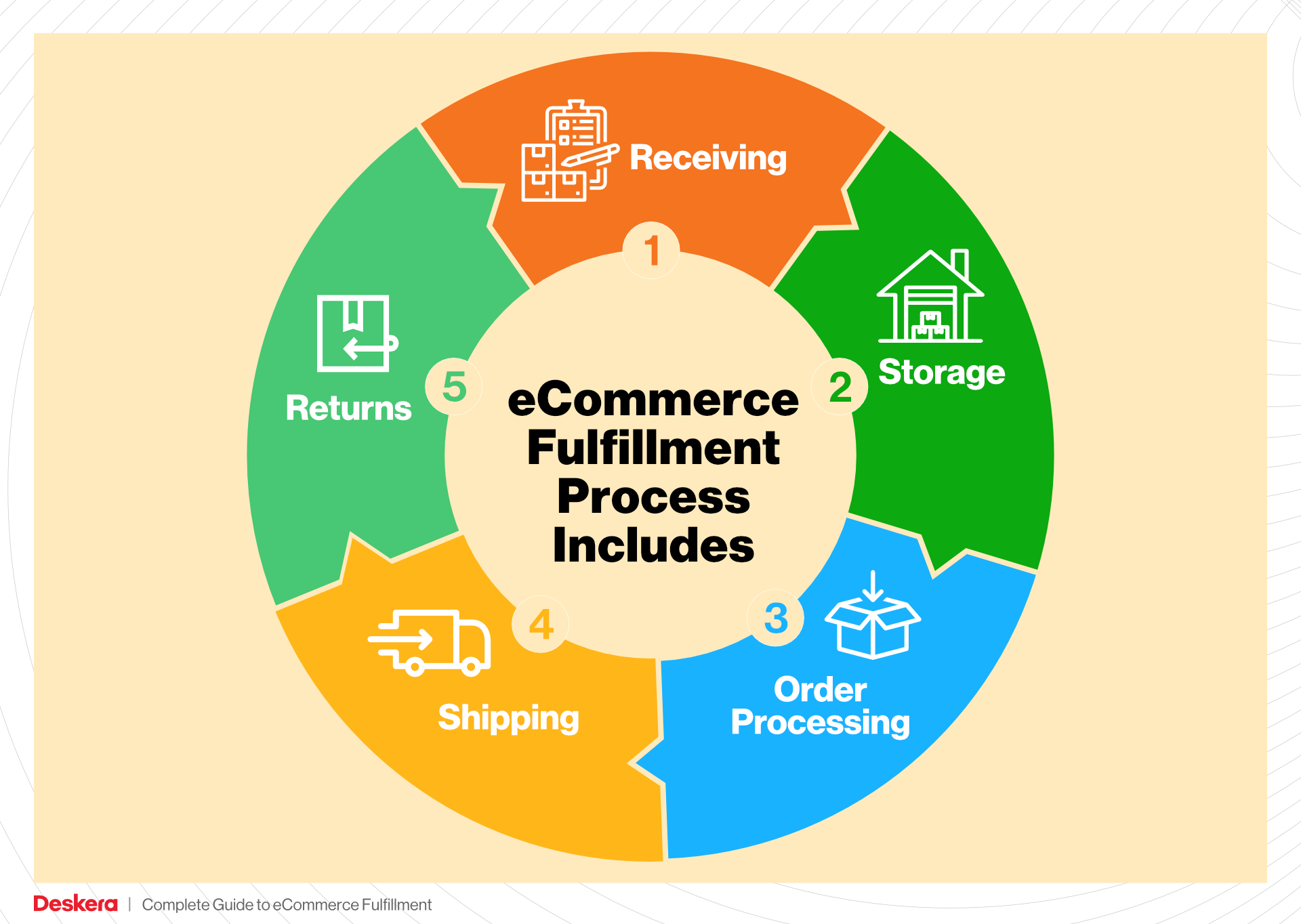
Why It’s Important: Efficient order picking directly impacts customer satisfaction, as faster picking leads to quicker order processing and shipping. Accuracy is also paramount; mistakes in this phase can lead to incorrect orders, resulting in returns and customer dissatisfaction. A critical tool in this step is the pick list, which serves as a guide for workers to identify and collect the correct items for each order.
4. Order Packing
After items have been picked, the next step is order packing. This involves preparing the items for shipment by securely packaging them to prevent damage during transit. Packaging materials such as boxes, padding, and tape are selected based on the type and fragility of the products being shipped.
Why It’s Important: Effective packing is essential for protecting products and ensuring they arrive at the customer’s door in perfect condition. Poor packing can lead to damage and increased return rates, which can negatively affect profitability. A key term here is packing slip, a document included in the package that lists the items in the order, serving as a confirmation for both the customer and the seller.
5. Shipping & Delivery
The final step in the order fulfillment process is shipping and delivery. This involves selecting a carrier, generating shipping labels, and dispatching the package to the customer. Depending on the shipping method chosen by the customer (standard, expedited, etc.), delivery times may vary.
Why It’s Important: Timely and accurate delivery is one of the most critical factors influencing customer satisfaction. Delays or errors in shipping can lead to negative reviews and lost business. A key term to understand in this phase is tracking number, which allows both the business and the customer to monitor the shipment’s progress and estimated delivery date. Effective shipping strategies, including negotiating rates with carriers and utilizing shipping software, can enhance efficiency and reduce costs.
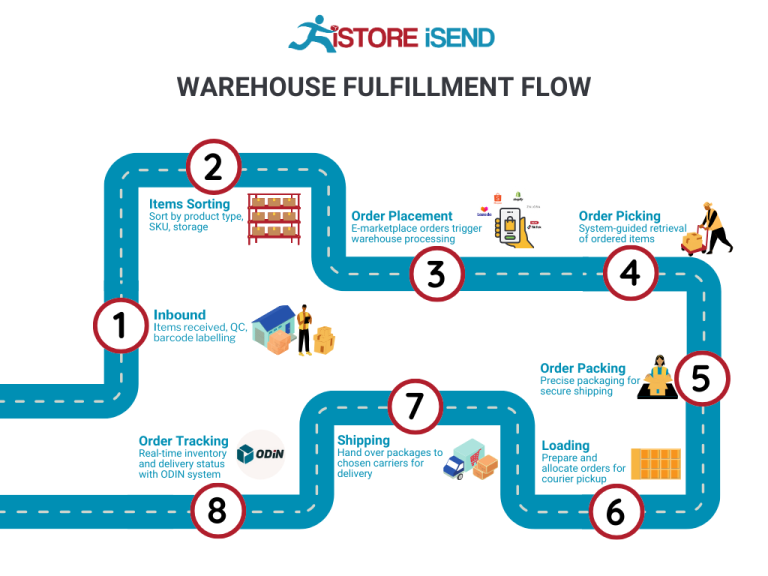
Conclusion
Understanding and optimizing each step of the order fulfillment process—from receiving inventory to shipping and delivery—is vital for e-commerce businesses looking to scale. By focusing on efficiency and accuracy at each stage, businesses can enhance customer satisfaction, reduce operational costs, and ultimately drive profitability. Implementing best practices and leveraging technology will help ensure that your order fulfillment process is not only effective but also scalable as your business grows.
Comparing Fulfillment Models: In-House vs. 3PL vs. Dropshipping
Fulfillment Model Comparison Table
| Model | Who Handles Inventory | Best For (Business Stage) | Key Advantage | Key Disadvantage |
|---|---|---|---|---|
| In-House Fulfillment | The e-commerce business | Startups and established brands | Full control over inventory and processes | High overhead costs and resource demands |
| Third-Party Logistics (3PL) | A third-party provider | Growing businesses | Scalability and expertise in logistics | Less control over fulfillment processes |
| Dropshipping | Supplier or manufacturer | New or small businesses | Low upfront investment and no inventory risk | Lower profit margins and longer shipping times |
In-House Fulfillment
In-house fulfillment involves managing all aspects of the order fulfillment process internally. This means that the e-commerce business is responsible for storing, picking, packing, and shipping products directly to customers. This model is often favored by startups and established brands that want to maintain full control over their inventory and customer experience. The key advantage of in-house fulfillment is the ability to customize operations to meet specific business needs, ensuring that the brand’s unique identity is reflected in every customer interaction. Businesses can control quality, turnaround times, and shipping methods, which can lead to enhanced customer satisfaction and loyalty.
However, in-house fulfillment comes with significant challenges. It requires substantial investments in infrastructure, including warehousing, staffing, and technology, which can be a heavy financial burden, especially for smaller businesses. Additionally, managing fulfillment in-house can limit a company’s ability to scale rapidly, as increased order volumes necessitate more resources and potentially complex logistical adjustments. As businesses grow, they may find that the demands of in-house fulfillment detract from their core competencies, such as marketing and product development.
Third-Party Logistics (3PL)
Third-party logistics (3PL) involves outsourcing the fulfillment process to a specialized provider. These 3PL companies handle everything from inventory management to shipping, allowing businesses to focus on their core operations. This model is particularly advantageous for growing businesses that face increasing order volumes but lack the resources or expertise to manage logistics effectively. By partnering with a 3PL, businesses can benefit from the provider’s established relationships with carriers, advanced technology, and logistics expertise, leading to faster and more accurate order fulfillment.
The primary advantage of using a 3PL provider is scalability. As order volumes fluctuate, businesses can easily adjust their logistics needs without having to invest in additional infrastructure or staffing. This flexibility enables businesses to respond quickly to market demands, which is critical for maintaining competitiveness in the ever-evolving e-commerce landscape. However, the trade-off is that businesses relinquish some control over their fulfillment processes. This can lead to potential misalignments in brand representation and customer service if the 3PL provider does not meet the business’s standards or expectations.
Dropshipping
Dropshipping is a fulfillment model where the e-commerce business does not hold any inventory. Instead, when a customer places an order, the business purchases the item from a supplier or manufacturer, who then ships it directly to the customer. This model is particularly appealing for new or small businesses due to its low upfront investment and minimal risk. Since there is no need to maintain inventory or manage warehousing, businesses can focus their resources on marketing, sales, and customer engagement.
The key advantage of dropshipping is the elimination of inventory-related costs, which allows for lower overhead and reduced financial risk. This makes it an attractive option for entrepreneurs looking to test new products or markets without significant capital outlay. However, dropshipping also has its downsides. Profit margins can be lower compared to other fulfillment models, as businesses must pay wholesale prices to suppliers and often deal with longer shipping times that can impact customer satisfaction. Additionally, relying on suppliers for inventory management means businesses have less control over product quality and fulfillment speed, which can lead to potential issues with customer service and brand reputation.
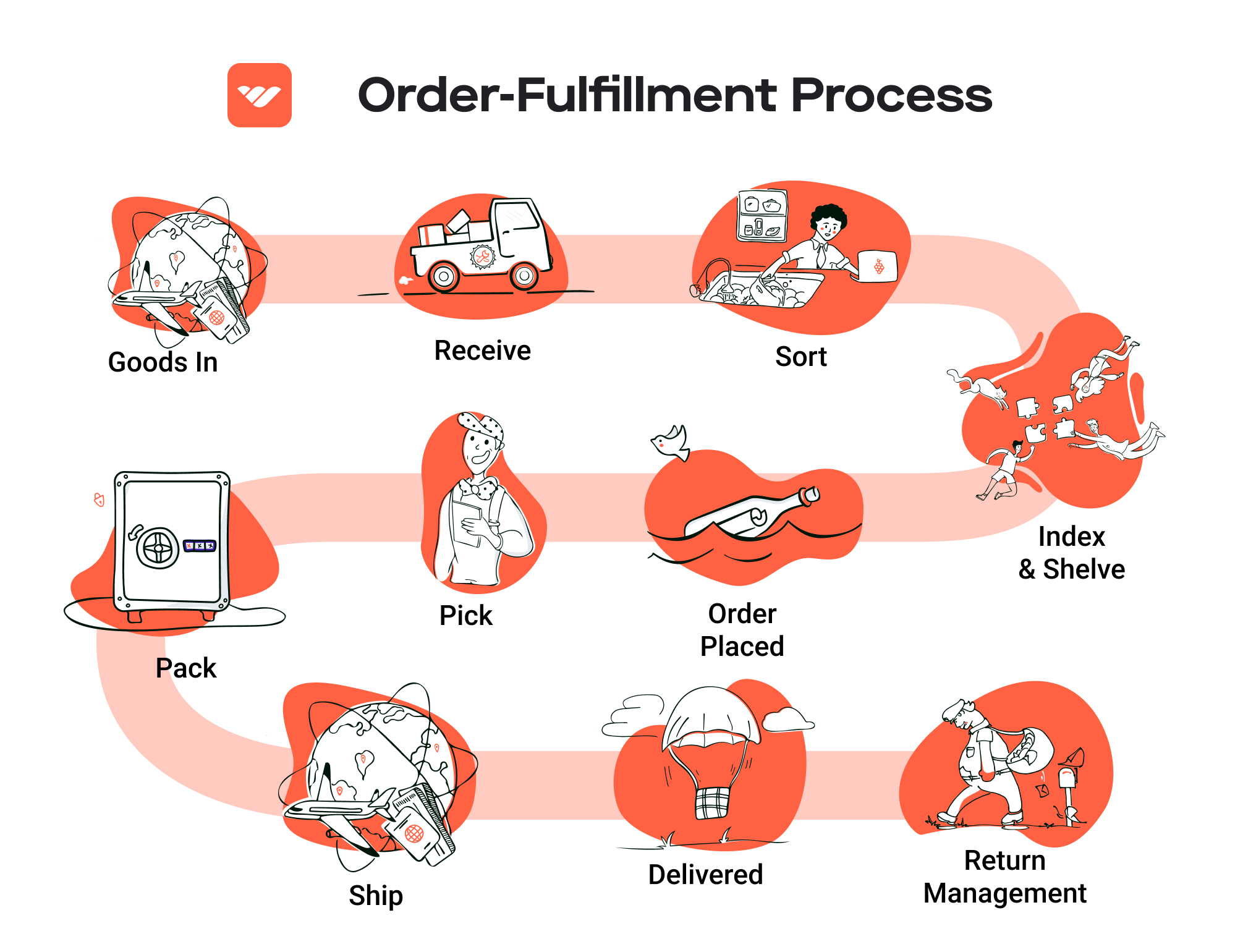
Conclusion
Choosing the right fulfillment model is crucial for e-commerce businesses looking to scale effectively. Each option—In-House Fulfillment, 3PL, and Dropshipping—offers distinct advantages and challenges that must be considered in light of the business’s current stage, resources, and growth ambitions. By carefully evaluating these models, e-commerce entrepreneurs can align their fulfillment strategies with their overall business goals, enhancing efficiency, customer satisfaction, and ultimately, profitability.
A Deep Dive into Amazon FBA: Pros, Cons, and Who It’s For
Understanding Fulfillment by Amazon (FBA)
Fulfillment by Amazon (FBA) is a service offered by Amazon that allows e-commerce sellers to store their products in Amazon’s fulfillment centers. Amazon takes care of storage, packaging, and shipping on behalf of the sellers. This service also provides customer service and handles returns, allowing sellers to focus more on growing their business and less on the logistical complexities of order fulfillment.
How FBA Works
-
Product Listing: Sellers create product listings on Amazon and choose to enroll their products in the FBA program. This process includes setting prices, writing descriptions, and uploading images.
-
Shipping Inventory: Sellers send their products to Amazon’s designated fulfillment centers. Amazon provides specific guidelines on how to package and label items.
-
Storage: Once the inventory arrives at the fulfillment center, Amazon stores it until an order is placed.
-
Order Fulfillment: When a customer places an order, Amazon picks, packs, and ships the product on behalf of the seller. The seller does not have to handle any of these logistics.
-
Customer Service and Returns: Amazon manages customer inquiries and handles returns, providing a seamless experience for buyers.
-
Payment: After the sale, Amazon processes the payment and deposits the seller’s share into their account, minus applicable fees.
Pros of Using FBA
1. Prime Eligibility
Products fulfilled by Amazon are automatically eligible for Amazon Prime. This offers sellers access to millions of Prime members who are more likely to purchase items with fast, free shipping. The Prime badge can significantly increase sales, as customers often prefer products that can be delivered quickly.
2. Enhanced Customer Trust
Amazon has built a reputation for reliability and customer service. By using FBA, sellers can leverage Amazon’s established trust with consumers. Products shipped through FBA often have higher conversion rates, as customers are more likely to buy from sellers who utilize Amazon’s fulfillment services.
3. Multi-Channel Fulfillment
Sellers can use FBA to fulfill orders from other sales channels, such as their own websites or other marketplaces. This flexibility allows businesses to streamline their operations and maintain consistent service levels across various platforms.
4. Scalability
FBA allows sellers to scale their business without needing to invest in warehousing or logistics infrastructure. As order volumes increase, Amazon handles the additional workload, allowing sellers to focus on marketing and product development.
5. Simplified Returns Management
Amazon’s return policies and customer service processes are well-established. Sellers benefit from Amazon’s expertise in managing returns, which can enhance customer satisfaction and reduce the seller’s burden.
Cons of Using FBA
1. High Fees
While FBA provides many advantages, it also comes with various fees that can eat into profits. These include storage fees for inventory and fulfillment fees for each item sold. Sellers must carefully calculate these costs to ensure profitability.
2. Strict Inventory Rules
Amazon has stringent guidelines regarding inventory management. Sellers must adhere to rules about inventory quantities, packaging, and labeling. Failure to comply can result in penalties or even the suspension of selling privileges.
3. Commingling Risks
FBA products may be commingled, meaning that a seller’s inventory can be stored alongside inventory from other sellers. This can lead to issues where customers receive products from other sellers instead of the original seller’s item, potentially harming brand reputation and customer trust.
4. Loss of Control
By outsourcing fulfillment to Amazon, sellers relinquish some control over the fulfillment process. This can be concerning for businesses that prioritize brand experience and customer interaction. Sellers may find it challenging to maintain their unique brand identity when relying on Amazon’s packaging and shipping processes.
5. Inventory Limitations
Amazon imposes limits on the amount of inventory sellers can store in their fulfillment centers, especially for new accounts or during peak seasons. This restriction can hinder a seller’s ability to scale and meet demand during busy periods.
Who is FBA Best For?
Fulfillment by Amazon is particularly advantageous for:
-
Small to Medium-Sized Businesses: These businesses often lack the infrastructure to manage logistics effectively. FBA allows them to compete with larger companies by providing fast shipping and excellent customer service without significant investment.
-
Sellers with High Sales Volume: Businesses experiencing rapid growth can benefit from FBA’s scalability. As order volumes increase, Amazon’s infrastructure can handle the additional demand without requiring the seller to expand their own logistics operations.
-
Brands Looking to Build Trust: Sellers who want to enhance their credibility and reach a broader audience can leverage Amazon’s reputation. Using FBA can help boost visibility and trust among potential buyers.
-
Multi-Channel Sellers: Businesses selling on multiple platforms can streamline their operations by using FBA for order fulfillment across different channels, ensuring consistent service levels.
In conclusion, Fulfillment by Amazon offers a powerful solution for e-commerce sellers seeking to enhance their operational efficiency and customer service. While it presents certain challenges, the benefits often outweigh the drawbacks, especially for those looking to scale their business in a competitive marketplace. By carefully weighing the pros and cons, sellers can determine if FBA aligns with their operational goals and customer expectations.
Core Services Offered by Fulfillment Centers
Inventory Management & Warehousing
Inventory management and warehousing are foundational services provided by fulfillment centers, ensuring that e-commerce businesses maintain optimal stock levels and efficient storage practices. This service encompasses the systematic tracking of inventory from the moment it arrives at the fulfillment center until it is shipped to the customer.
Benefits:
-
Real-Time Inventory Tracking: Fulfillment centers employ advanced inventory management systems that provide real-time data on stock levels, allowing businesses to avoid stockouts and overstock situations. This capability is crucial for maintaining customer satisfaction, as it ensures that products are available when customers want to purchase them.
-
Cost Efficiency: By outsourcing warehousing to a fulfillment center, e-commerce businesses can save on the costs associated with maintaining their own warehouse, such as rent, utilities, and staffing. This reduction in overhead allows businesses to allocate resources more effectively, potentially investing in marketing or product development.
-
Space Optimization: Fulfillment centers are designed to maximize storage space, often utilizing advanced shelving systems and layouts that facilitate easy access to products. This organization not only improves operational efficiency but also enhances the speed of order fulfillment.
Pick and Pack Services
Pick and pack services are a critical component of the order fulfillment process, involving the selection (picking) of products from the warehouse and packaging (packing) them for shipment. This service is vital for ensuring that orders are fulfilled accurately and efficiently.
Benefits:
-
Accuracy in Order Fulfillment: Professional pick and pack services reduce the likelihood of errors in order fulfillment. Fulfillment centers often use barcode scanning technology to ensure that the correct items are picked, significantly decreasing the chances of sending the wrong products to customers.
-
Speedy Turnaround Times: With streamlined processes and trained staff, fulfillment centers can process orders more quickly than many in-house operations. This efficiency translates into faster shipping times, enhancing customer satisfaction and loyalty.
-
Scalability: As e-commerce businesses grow, their order volume can fluctuate dramatically. Fulfillment centers can easily scale their pick and pack operations to accommodate increased demand during peak seasons, such as holidays or sales events, without requiring businesses to hire additional staff.
Kitting and Assembly
Kitting and assembly services involve the grouping of individual items into ready-to-ship sets or kits, which may include multiple components or require assembly prior to shipping. This service is particularly beneficial for businesses that sell products that need to be bundled together, such as gift sets or DIY kits.
Benefits:
-
Enhanced Product Offerings: By utilizing kitting services, e-commerce businesses can create unique product offerings that differentiate them from competitors. This can lead to increased sales and customer interest, as consumers often appreciate the convenience of bundled products.
-
Streamlined Operations: Kitting allows businesses to simplify their inventory management by reducing the number of individual SKUs they need to track. Instead of managing each component separately, businesses can manage kits as a single SKU, simplifying logistics and inventory control.
-
Improved Customer Experience: Kitting and assembly ensure that customers receive complete and ready-to-use products, which enhances their overall shopping experience. This attention to detail can lead to higher customer satisfaction and repeat purchases.
Returns Management (Reverse Logistics)
Returns management, often referred to as reverse logistics, is a critical service offered by fulfillment centers that involves the handling of returned products. This service encompasses everything from receiving returns to restocking items and processing refunds or exchanges.
Benefits:
-
Efficient Processing of Returns: A well-organized returns management process ensures that returns are handled swiftly and efficiently. Fulfillment centers can quickly assess the condition of returned items, restock them if they are in sellable condition, or manage disposal if necessary.
-
Customer Retention: An effective returns management system can significantly enhance customer satisfaction. When customers know they can easily return items, they are more likely to make a purchase, reducing the perceived risk associated with online shopping.
-
Data Insights for Improvement: Fulfillment centers often provide analytics on return rates and reasons for returns. This data is invaluable for e-commerce businesses looking to improve their product offerings, address quality issues, and reduce future returns, ultimately enhancing overall profitability.
In conclusion, partnering with a fulfillment center provides e-commerce businesses with essential services that streamline operations, improve customer satisfaction, and drive growth. By leveraging expertise in inventory management, pick and pack services, kitting and assembly, and returns management, businesses can focus on their core competencies while ensuring a seamless logistics experience for their customers.
How to Choose a Fulfillment Partner: A 6-Point Checklist
Location & Warehouse Network
Importance: The location of your fulfillment partner’s warehouses plays a crucial role in your shipping times and costs. A strategically located warehouse network can significantly reduce delivery times to your customers and lower shipping expenses, which directly impacts customer satisfaction and your bottom line.
Questions to Ask:
– Where are your warehouses located, and how do they align with our customer base?
– Do you have a multi-warehouse network that allows for distributed inventory?
– How do you manage shipping routes to optimize delivery speed and costs?
Technology & Integrations
Importance: In today’s fast-paced e-commerce environment, leveraging technology is essential for efficient order fulfillment. A partner with robust technology can streamline operations, reduce errors, and improve communication between your systems and theirs. Integration capabilities with your existing platforms (like your e-commerce site, inventory management systems, and customer relationship management tools) are essential for seamless operations.
Questions to Ask:
– What order management system do you use, and how does it integrate with popular e-commerce platforms?
– Can your system handle multiple sales channels, and how is data synced across those channels?
– What automation features do you offer (e.g., order tracking, inventory updates)?
Specializations (e.g., Cold Storage, Oversized Items)
Importance: Not all fulfillment partners are equipped to handle specialized products. If you sell items that require specific storage conditions (like perishables or temperature-sensitive products) or oversized items, it’s critical to partner with a 3PL that has the necessary capabilities. This ensures that your products are stored and handled appropriately, minimizing spoilage or damage.
Questions to Ask:
– Do you have specialized facilities for handling specific product types (e.g., cold storage, hazardous materials)?
– How do you manage the storage and handling of oversized or bulky items?
– What protocols do you have in place to ensure product integrity during storage and shipping?
Scalability & Capacity
Importance: As your business grows, your order volume will likely fluctuate. A fulfillment partner must have the capacity to scale operations up or down based on your needs. This flexibility can prevent bottlenecks during peak seasons, such as holidays or special promotions, and ensure you can meet customer demand without compromising service quality.
Questions to Ask:
– What is your current capacity for handling orders, and how do you plan to scale that capacity?
– Can you accommodate seasonal fluctuations in order volume, and how do you manage peak times?
– What measures do you have in place to ensure quick ramp-up in operations if needed?
Pricing and Contracts
Importance: Understanding the pricing structure and contract terms of a potential fulfillment partner is essential for budgeting and financial planning. Look for transparency in pricing and be cautious of hidden fees that can inflate your costs. Additionally, contract terms should be flexible enough to accommodate changes in your business needs.
Questions to Ask:
– Can you provide a detailed breakdown of your pricing model (e.g., storage fees, pick and pack fees, shipping costs)?
– Are there any additional fees that we should be aware of (e.g., for returns, special handling)?
– What are the terms of the contract, and what is the process for terminating or renewing it?
Customer Support & Reviews
Importance: Effective customer support is critical for addressing any issues that may arise during the fulfillment process. A reliable partner should offer responsive support to help you navigate challenges as they come up. Additionally, checking reviews and testimonials from other clients can provide insight into their reliability and service quality.
Questions to Ask:
– What customer support options do you offer (e.g., phone, email, live chat), and what are your response times?
– Can you provide references or testimonials from current or past clients?
– How do you handle issues such as lost shipments or fulfillment errors, and what support can we expect during such situations?
Conclusion
Choosing the right fulfillment partner is a pivotal decision for your e-commerce business. By carefully evaluating potential 3PL providers against this checklist, you can ensure that you select a partner that aligns with your operational needs, supports your growth, and enhances your customer experience. Remember, the right partner can be a game-changer in scaling your logistics and driving your business success.
Understanding Fulfillment Pricing: A Breakdown of Common Fees
Initial Setup Fees
Initial setup fees are typically charged when you first engage a fulfillment provider. These fees can vary significantly depending on the complexity of your business needs and the provider’s services. Common components of initial setup fees include account setup, integration with e-commerce platforms, and configuration of warehouse management systems.
To calculate initial setup fees, providers may consider factors such as the number of products you will be managing, the level of customization required for your operations, and the time needed for onboarding. It’s essential to clarify what is included in these fees, as some providers might bundle additional services, such as training for your team, while others may charge separately for those.
Receiving Fees
Receiving fees are charged for the process of accepting and processing incoming inventory at the fulfillment center. These fees cover the labor and resources needed to unload, inspect, and stock your products.
Receiving fees are generally calculated based on the volume of goods received or the time taken to process the inventory. For instance, you might be charged a flat fee per pallet or per carton, or an hourly rate for the labor involved. It’s crucial to understand how your specific product characteristics (size, weight, fragility) might affect these fees, as more complex items could incur higher costs.
Storage Fees (per pallet/bin)
Storage fees are assessed for the space your inventory occupies within the fulfillment center. These fees can be charged on a per pallet or per bin basis, depending on how your products are stored.
Typically, storage fees are calculated monthly and can vary based on the type of storage solution utilized (e.g., standard, climate-controlled, or high-density storage). The costs may also fluctuate based on the seasonality of your business; for instance, many providers implement higher rates during peak seasons like the holiday rush when space is at a premium. To manage these fees effectively, consider optimizing your inventory turnover and minimizing the amount of stock stored at any given time.
Pick & Pack Fees (per item/order)
Pick and pack fees are incurred when orders are processed and prepared for shipping. This involves selecting items from inventory, packing them, and preparing them for dispatch.
These fees can be structured in various ways, including a flat fee per order or a per-item fee, depending on how your fulfillment provider calculates their costs. For example, if your orders typically contain multiple items, understanding the cost implications of each additional item is crucial. Some providers may also charge for special packing materials or labor for custom packaging, so be sure to ask for a detailed breakdown of what is included in the pick and pack fees.
Shipping Fees
Shipping fees encompass the costs associated with sending your products to customers. These fees can vary widely based on factors such as package weight, destination, shipping method (standard, expedited, etc.), and the carrier used.
Shipping fees are usually calculated based on the dimensions and weight of the package, and many fulfillment providers offer discounted rates through partnerships with major carriers. It’s important to compare these shipping costs against your pricing strategy and customer expectations. Additionally, some providers might offer flat-rate shipping options, which can simplify budgeting but may not always be the most cost-effective choice depending on your product mix.
Tips for Getting an Accurate Quote
-
Provide Detailed Information: When requesting quotes, provide as much detail as possible about your products, order volumes, and any specific requirements. This will help fulfillment providers give you a more accurate estimate.
-
Ask for Transparency: Request a breakdown of all fees, including any potential hidden costs. Understanding the fee structure will help you budget effectively and avoid surprises.
-
Consider Volume Discounts: Inquire if the provider offers discounts based on order volume or long-term contracts. Many fulfillment centers are willing to negotiate pricing based on your commitment.
-
Evaluate Service Levels: Different providers may offer varying levels of service. Assess whether you need additional services, like kitting or specialized handling, which could affect pricing.
-
Compare Multiple Providers: Don’t settle for the first quote you receive. Compare several fulfillment providers to find the best balance of cost, service, and reliability that aligns with your business goals.
By thoroughly understanding these common fulfillment pricing models, you can make informed decisions that align with your operational needs and financial objectives, ultimately contributing to the successful scaling of your e-commerce business.
Frequently Asked Questions (FAQs) about Fulfillment
1. Why is accurate order fulfillment critical for e-commerce businesses?
Accurate order fulfillment is vital because it directly impacts customer satisfaction and loyalty. When orders are processed correctly and delivered on time, customers are more likely to return for future purchases. Inaccurate fulfillment can lead to returns, exchanges, and negative reviews, all of which can harm a business’s reputation and profitability.
2. What are the key benefits of efficient order fulfillment?
Efficient order fulfillment leads to improved customer satisfaction, reduced processing times, minimized errors, enhanced operational efficiency, and increased profitability. By streamlining the fulfillment process, businesses can handle more orders, reduce costs, and provide a better overall experience for their customers.
3. How can businesses minimize order errors in fulfillment?
To minimize order errors, businesses should implement automated systems, such as barcode scanners and order management software. These technologies help ensure accurate data entry and tracking. Additionally, organizing the warehouse effectively and using standardized picking methods can significantly reduce the likelihood of mistakes.
4. What is the difference between a warehouse and a fulfillment center?
A warehouse is primarily used for storing goods, while a fulfillment center focuses on processing and shipping orders to customers. Fulfillment centers are equipped with advanced technology and systems designed to handle order processing efficiently, including picking, packing, and shipping, making them essential for e-commerce operations.
5. What is a Third-Party Logistics (3PL) provider?
A 3PL provider is a company that offers outsourced logistics services, including warehousing, order fulfillment, and shipping. Businesses often partner with 3PL providers to leverage their expertise and resources, allowing them to focus on core operations while benefiting from improved fulfillment efficiency and cost savings.
6. How much do fulfillment services typically cost?
The cost of fulfillment services varies based on several factors, including order volume, storage space requirements, and the specific services needed (e.g., packing, shipping, returns management). On average, businesses can expect to pay between $2 to $5 per order, plus additional fees for storage and specialized services. It is essential to get quotes from multiple providers to find the best fit for your needs.
7. How can businesses improve their operational efficiency in order fulfillment?
To enhance operational efficiency, businesses should invest in technology such as order management systems, optimize their warehouse layout, and streamline picking processes. Regularly evaluating and refining these processes can lead to significant improvements in speed and accuracy, ultimately benefiting customer satisfaction and profitability.
8. What role does technology play in order fulfillment?
Technology plays a crucial role in modern order fulfillment by automating processes, reducing errors, and enhancing communication. Tools such as inventory management systems, automated picking solutions, and shipping software help businesses manage their fulfillment operations more efficiently, allowing for quicker response times and better customer service.
9. How can outsourcing fulfillment benefit my e-commerce business?
Outsourcing fulfillment can provide numerous advantages, including access to specialized expertise, scalability, and cost savings. By partnering with a 3PL provider, businesses can offload the complexities of order fulfillment, allowing them to focus on growth and core competencies while ensuring that orders are processed accurately and efficiently.
10. What strategies can I implement to optimize my order fulfillment process?
To optimize order fulfillment, consider implementing the following strategies:
– Invest in an efficient order management system.
– Streamline your picking and packing processes.
– Organize your warehouse for maximum efficiency.
– Utilize automation to reduce manual errors.
– Negotiate better shipping rates and offer various shipping options.
– Regularly review and analyze your fulfillment performance to identify areas for improvement.
Conclusion: Is Outsourcing Fulfillment the Right Move for Your Business?
Evaluating the Benefits of Outsourcing Fulfillment
Outsourcing your order fulfillment can be a game-changer for your e-commerce business, especially as you aim to scale operations. The primary benefits of utilizing a fulfillment service include significant time savings, enhanced scalability, and access to specialized expertise. By delegating the complexities of warehousing, picking, packing, and shipping to a third-party logistics (3PL) provider, you can redirect valuable time and resources toward core business activities, such as marketing and product development.
Scalability is another critical advantage. As your business grows, so does your order volume. Managing this influx can be daunting and costly, particularly if you lack the infrastructure or staffing to meet demand. A fulfillment partner offers the flexibility to adjust operations seamlessly, accommodating spikes in order volume without the burden of hiring and training additional staff or investing in larger facilities.
Moreover, 3PL providers bring a wealth of industry knowledge and experience. Their established systems often lead to improved operational efficiency, faster processing times, and reduced error rates, which ultimately enhances customer satisfaction. Many fulfillment partners also have established relationships with shipping carriers, allowing them to negotiate better rates, further reducing costs for your business.
However, choosing the right fulfillment partner is crucial for maximizing these benefits. A thorough evaluation of potential providers should include their track record, technology capabilities, and customer service standards.
Take Action Now
To determine if outsourcing fulfillment is the right next step for your business, consider conducting an audit of your current shipping and fulfillment processes. Identify pain points, inefficiencies, and areas where a 3PL could add value. This proactive approach will equip you with the insights needed to make informed decisions that drive growth and improve customer experiences.
Important Disclaimer
⚠️ Important Disclaimer
The information in this guide is for educational purposes. Fulfillment services, pricing, and platform features change frequently. Always conduct your own due diligence and consult with providers directly before making business decisions.
